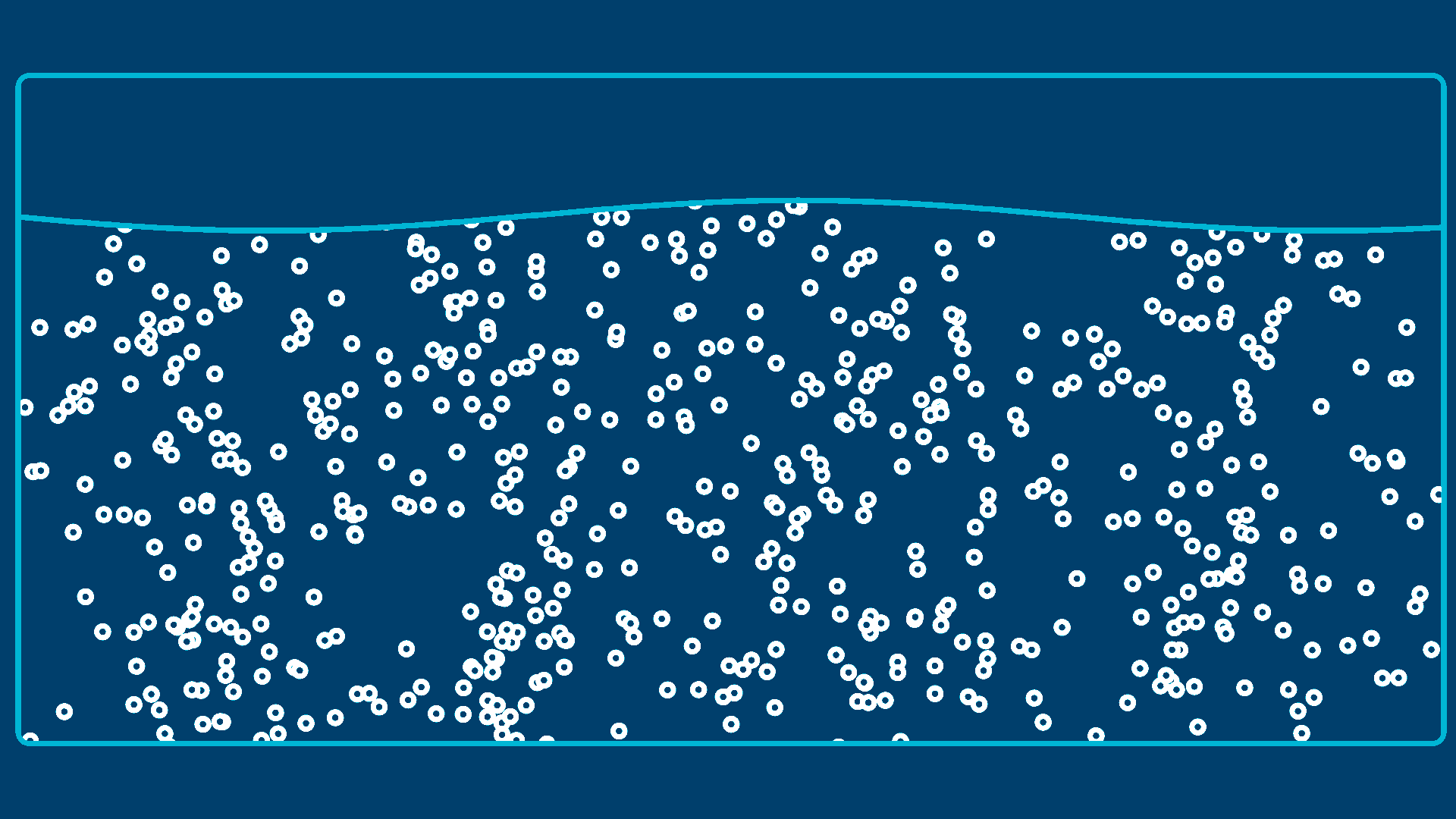Exploring the Properties and Applications of Ultra-Fine Bubbles
NANOBUBBLE FAQ
11/11/20245 min read


Introduction to Ultra-Fine Bubbles
Ultra-fine bubbles are encapsulated gas bubbles that possess diameters in the nanometer range, typically between 20 to 1000 nanometers. Their small size allows them to remain suspended in liquids and solids without rising to the surface, unlike conventional larger bubbles. This unique characteristic renders them nearly invisible to the naked eye, which differentiates them from the more commonly observed bubbles in various physical settings. These bubbles can contain a variety of gases, including air, oxygen (O2), ozone (O3), nitrogen (N2), and carbon dioxide (CO2), which significantly expands their potential applications across several fields.
The properties of ultra-fine bubbles are influenced by their surface tension and gas diffusion characteristics, making them behave differently when compared to larger bubbles. Due to their high surface area-to-volume ratio, they exhibit unique physical and chemical properties that can enhance specific behaviors in systems where they are employed. This functionality makes ultra-fine bubbles valuable in sectors such as water treatment, agriculture, and various industrial processes. Their stability in mixtures contributes to the improvement of chemical reactions and systems, such as increased reaction rates in wastewater treatment and enhanced oxygen transfer in aquaculture.
Moreover, the presence of ultra-fine bubbles can offer various environmental benefits, including increased efficiency in resource utilization and reduced chemical usage, demonstrating their potential in sustainable practices. As researchers continue to explore ultra-fine bubbles, there are exciting developments in their integration into innovative technologies and solutions. By understanding the fundamental characteristics and advantages of these nanobubbles, we can appreciate their role in addressing contemporary challenges, thus laying the groundwork for future applications and advancements in numerous industries.
Structure and Stability of Ultra-Fine Bubbles
Ultra-fine bubbles (UFBs) are defined as bubbles with diameters less than 100 nanometers. Their unique physical structure is instrumental to their myriad applications across various fields, from pharmaceuticals to environmental science. One of the critical characteristics of these ultra-fine bubbles is their ability to maintain stability, which can be attributed to surface tension. The small size of UFBs minimizes the gravitational effects on their stability, allowing them to remain suspended within various mediums for extended periods.
Surface tension plays a vital role in the stabilization of ultra-fine bubbles. The balance between the internal pressure of the gas and the external pressure from the surrounding liquid is pivotal in maintaining their structural integrity. Additionally, the encapsulation of these bubbles with coatings, such as lipids or polymers, can further enhance their stability. These coatings create a barrier that reduces gas diffusion and helps to maintain bubble size, effectively prolonging their lifespan. Factors such as the bubble size, gas composition within the bubble, and the environmental conditions also significantly influence the stability of UFBs.
Environmental conditions, including temperature, pressure, and the presence of surfactants, play an essential role in the longevity and behavior of ultra-fine bubbles in liquid states. In solid states, the interaction between UFBs and surrounding materials can lead to unique physical properties and behaviors. For instance, when embedded in a solid matrix, these bubbles can affect the material's mechanical characteristics, thus opening avenues for innovative applications in construction and materials science.
Understanding these factors not only sheds light on the structure and stability of ultra-fine bubbles but also enhances our knowledge of their interactions with different mediums. This information is crucial for harnessing their potential in various technological and environmental applications.
Generation Techniques of Ultra-Fine Bubbles
Ultra-fine bubbles (UFBs) are a powerful tool in various industries, known for their unique properties and versatility. The generation of these bubbles can be achieved through several techniques, each offering distinct advantages and characteristics. The primary methods include mechanical agitation, cavitation, and electrolysis. Mechanical agitation typically involves the use of high-speed mixers orhomogenizers to shear gas into liquid, producing bubbles that can range in size, depending on the energy input and conditions such as viscosity and temperature.
Cavitation, another widely used technique, relies on the rapid formation and collapse of vapor bubbles in a liquid. This method can effectively produce UFBs in the nanometer to micrometer range. The implosion of these cavitation bubbles generates shock waves and shear forces, resulting in the formation of ultra-fine bubbles within the medium. Industrial applications often capitalize on cavitation through specialized equipment such as ultrasonic devices or high-pressure pumps designed specifically for bubble generation.
Electrolysis is a less common but noteworthy technique for generating ultra-fine bubbles, particularly in water treatment applications. By applying an electrical current, gas is produced at the anode or cathode, forming bubbles that can be introduced into the liquid. The size and characteristics of these bubbles can be adjusted by manipulating the current and the overall system design, allowing for customization based on desired outcomes.
Innovations in bubble generation technology continue to emerge, enhancing the efficiency and effectiveness of UFB production. For instance, encapsulation techniques allow for the creation of coated bubbles that enhance stability and prolong the lifespan of the bubbles in different mediums. Furthermore, advancements in automated systems facilitate large-scale production, which expands the potential applications of ultra-fine bubbles across diverse sectors such as environmental remediation, food processing, and pharmaceuticals. As these methodologies evolve, the implications for industries relying on UFBs are significant, driving the development of novel applications and improving existing processes.
Applications and Impacts of Ultra-Fine Bubbles
Ultra-fine bubbles (UFBs) have emerged as a versatile tool across various industries owing to their unique properties, such as high surface area, low buoyancy, and stability. One of the primary applications of UFBs is in water treatment. They significantly enhance the removal of contaminants, thanks to their capability to improve the oxidation-reduction processes. Utilizing ultra-fine bubbles in wastewater treatment facilities has demonstrated marked improvements in pollutant degradation and overall water quality.
In agriculture, ultra-fine bubbles play a critical role in enhancing soil health and crop yield. When infused into irrigation systems, UFBs improve water penetration in the soil and facilitate nutrient absorption by plants. A growing body of research indicates that the application of UFBs can lead to increased crop resilience and productivity, providing farmers with an advantage in a challenging climate landscape.
Another notable application of ultra-fine bubbles is in food preservation. Their antimicrobial properties help extend the shelf life of perishable goods by inhibiting the growth of spoilage bacteria and pathogens on food surfaces. Numerous food processing companies have adopted UFB technology, leading to enhanced food safety and quality, ultimately benefiting consumers.
Furthermore, ultra-fine bubbles are gaining traction in the development of advanced materials. They are utilized in innovative processes such as foam and composite production, where they contribute to improved material properties including strength and lightweight characteristics. Incorporating UFBs into manufacturing supply chains opens new avenues for creating superior materials with a reduced environmental impact.
Real-world examples illustrate the efficacy of ultra-fine bubbles in these applications. For instance, case studies from agricultural sectors indicate a reduction in water usage while documenting enhanced yield metrics. Similarly, research conducted in the food industry has reported significant improvements in hygiene practices, underscoring the practicality of UFB deployment. The multifaceted applications of ultra-fine bubbles reveal their profound impact on efficiency and effectiveness across various sectors.
Innovation By Research
Shenton Way, Singapore
© 2024. C2C Technology Singapore Pte Ltd All rights reserved.
Company
RELATED Products
